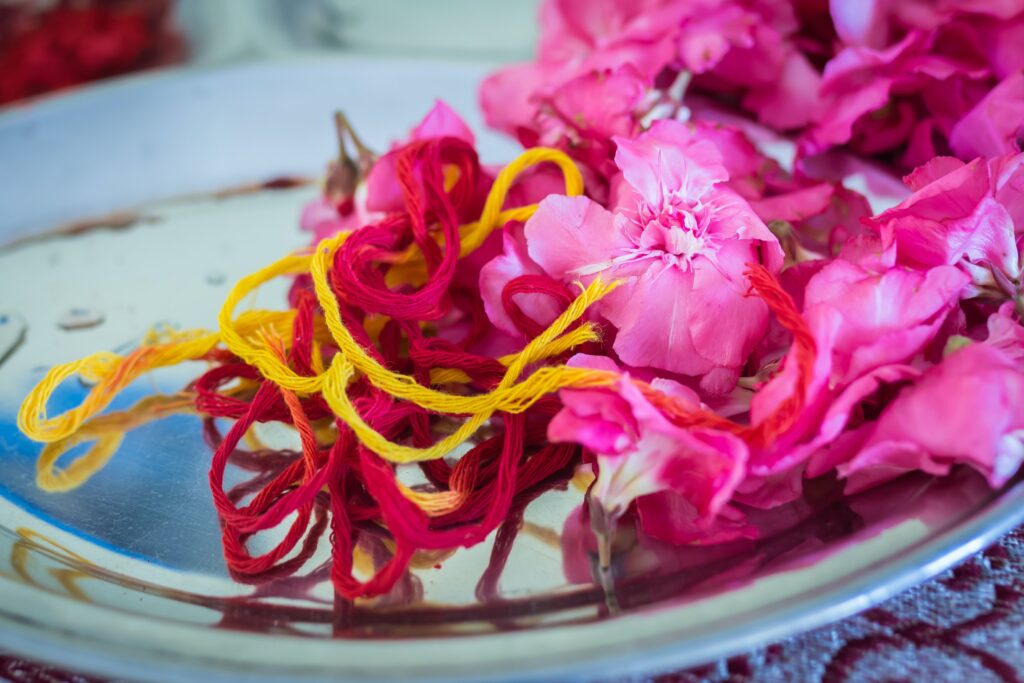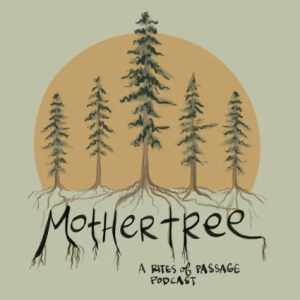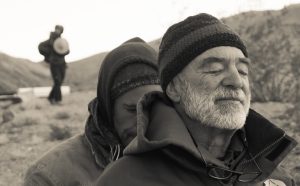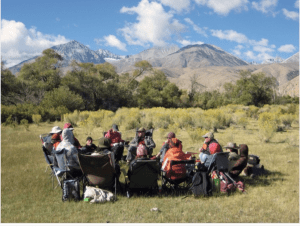
The Red Thread
The Way It Is
There’s a thread you follow. It goes among
things that change. But it doesn’t change.
People wonder about what you are pursuing.
You have to explain about the thread.
But it is hard for others to see.
While you hold it you can’t get lost.
Tragedies happen; people get hurt
or die; and you suffer and get old.
Nothing you do can stop time’s unfolding.
You don’t ever let go of the thread.
~ William Stafford ~
My own life-thread is red. Red as in life-blood red. Red as in a red-rock desert with its vast open space. Red as in the crimson red robe of the Buddha. Red as in the passions of a ruby red heart.
Joseph Campbell used to say: “Follow your bliss.” I might say, “Follow that blood-red thread.”
Like all humans, I am a storytelling animal, and about those opening lines I have two stories I might tell. The first is quite simple: Stafford’s poem inspired me to write about my own life-thread; I sat down at my desk and images began to flow; soon after the words were written. The more complex version is that I’ve spent my entire life preparing to write those lines. First there was discovering the thread—that alone took over a quarter of a century—and then there was another quarter century tracking it, holding on to it and, at times, desperately trying to not ever let it go.
If I were a poet, perhaps the first “story” would suffice, but I’m not. Stories for me take time to tell—time and more words than a single paragraph or even a page can contain. I promise, though, I’ll do my best to keep this from getting too long.
I simply want to tell you about that red thread.
☼ ☼ ☼
Storytelling on Retreat: The year was 1986. I was a fourth-year medical student studying abroad in England: an eight-week elective visiting six different medical practices, starting in London then moving about the countryside, first south then north. Halfway through the elective I happened upon my first ever solitary retreat: a fortunate blend of synchronicity and happenstance. That’s when I first discovered that red thread.
This was a heady, idealistic time. Years of rote book-learning were behind me and an entire medical career lay before me, beginning with a three-year family practice residency program that would start in a few months. At every stop of the journey I was trying out potential role models, looking to project my professional fantasies on to anyone sufficiently impressive. On the third visit I found the right man, Dr. David White: a young energetic G.P. in his first year of practice in Budleigh-Salterton, a town on the Devon coast of southwest England. During the week we did 20 or more home visits squeezed in between daily clinics and then finished each day with a fireside chat to digest the day. I was in medical school heaven. Dr. White was an appealing blend of smart, sensitive, hard-working, and deeply fortunate: the quintessential country doctor living an idyllic life in a quaint seaside town. The week together left me wondering: How might I create an American version of that life?
During one of our fireside chats, I mentioned to White that I was re-reading the bible of my twenties, Robert Pirsig’s Zen and the Art of Motorcycle Maintenance, to which he suggested I get a copy of Abraham Maslow’s Motivation and Personality. I picked up Maslow’s book while swinging through London on my way north to my next stop, St. James’s Hospital in Leeds. Dreams of being a country doctor mixed with Pirsig’s philosophical monologue about Quality as the knife-edge of experience, and then segued naturally into Maslow’s talk about a hierarchy of needs culminating in a call for self-actualization. My head was spinning with ideas, dreams, and projections when I arrived at the next stop, only to discover that my host-physician would be away until the following Thursday. Unexpectedly I had four days of freedom, which soon morphed into a solo trip to the nearby Lake District.
Memories from those four days are still vivid. It was as if I had stumbled upon a great and magical land: not just the incredible fells and vales of the Lake District, but a land inside of me that was just as beautiful, just as still. Running through an inner landscape, easy and free, was a river of thought—no, not just thought, but thought and feeling together as one. The more I walked the outside land, the quieter my inner world became, and the more that inner wellspring bubbled up from inside and flowed. I followed those meandering thought-feelings, watching them eddy and then pool into stories: life stories about who I was in the world, and what I was becoming.
Charlotte Linde, author of Life Stories: The Creation of Coherence, suggests that much of human storytelling is designed to cohere an identity: an “I, me, mine” definition of how I fit in this world. During the entire eight weeks abroad—and especially during those four days alone—I was working hard to do just that. The terms of this life-long project, according to Linde, are that the life stories I tell be meaningful to me, have the right effect on others, follow a recognizable template, and be consistent and true. I was trying to fit together a template of my own with the important pieces I already knew: I am an American . . . I am a gay man . . . soon I will be a family physician. Put those altogether, I wondered, and what might that mean?
Still naïve in the ways of solitude, I spent the evenings of that Lake District retreat writing an overly-long letter to Dr. White. I wanted to stoke the fires of our late night chats, but instead the letter strained our relationship to an eventual breaking point. In losing a possible mentor, though, I had found something much more important: my own inner voice. I slowly began to understand that my basic nature is (and has always been) that of a contemplative. I need time alone, preferably in nature, that I might listen for the stories inside me and then write them down.
At the age of 29 I’d finally found my own life thread: solitude, stillness and the telling of stories. This was the great gift from my time in England.
I returned home to a professional life far different from what I imagined. My three years at the county hospital in Santa Rosa, an hour north of San Francisco, coincided with the arrival of the first cohort of young men (and a few women) wasting away from AIDS. To be a gay family physician in America in the late eighties meant caring for people with AIDS—lots of them. At a tender professional age, I became one of the county’s two AIDS specialists, which made me privy to an intimacy of suffering that was at once awesome and overwhelming. Each day brought new upset and agitation: either heartbreak from the bedside ministry, or fury at the indifference of the greater community. The thread of solitude that I had discovered in England soon was more than something desirable; it became a life-line for survival. Soul survival. I hung on for dear life.
A foundational benchmark of my life soon became having a minimum of three days per month alone in nature. Every month I made the time. I had found the red thread—the magic of stories borne out of solitary stillness—and yet my daily life was anything but still. A few years into the solo retreats, I came across a book—“Solitude: A Return to the Self” by the English psychiatrist Anthony Storr—that gave me the framework I needed to understand this monthly practice. “Suppose that I become dissatisfied with my habitual self,” he wrote, “or feel that there are areas of experience or self-understanding which I cannot reach. One way of exploring these is to remove myself from present surroundings and see what emerges.” But solitude is not without its dangers, cautioned Storr. “Any form of new organization or integration within the mind has to be preceded by some degree of disorganization.”
For me, though, the opposite was true. My daily life was “organized” around being fully present to “disorganization”: the dissolution and death of young people my own age. Going away to a mountain, or onto a sweeping beach, or into a vast desert, was an opportunity to leave behind the hellish realms of the epidemic and to reconnect with the central, stabilizing force of my life: the red thread of stillness and storytelling. Soon most all of what I was writing on retreat were stories about the suffering and dying that I was being asked to hold, to guide, to witness. On retreat, and only on retreat, the confusion of my emotion-laden life would come clear. Clear . . . and understandable.
Borrowing again from Linde, my life story had taken on the shape of an entirely new template—one never before lived out in the history of the world. “I am an AIDS physician . . .” Without any suitable role models, textbooks, or guideposts, I had to create a template of my own. I had to write the story of that life myself, and solitary stillness made that possible. But this writing practice offered more than self-definition; it allowed me to unwind the stories and then release them. Without that, I quickly would have become a cynical empty-shell of a physician. Even with the stillness and the stories, I risked much of the same.
Soon enough, I was burning out . . . or perhaps this is the better story to tell: My old way of being a physician was dying.
Time alone in nature—with all the stillness and storytelling that might offer—was no longer enough to replenish me. I needed a ceremony of rebirth and I needed a community that could hold and witness that ceremony. I needed a new way of being a physician. It was then the red thread led me to The School of Lost Borders and the practice of fasting in the wilderness.
☼ ☼ ☼
Storytelling at The School of Lost Borders: A wilderness fast offers an uncommonly powerful ceremony for letting die an old story that no longer serves, so that a new story—one more closely aligned with the thread of one’s life—may be born. This is a quintessential version of a “rite of passage,” a term first coined by the Belgian anthropologist Arnold van Gennup. Van Gennup described three basic phases of a rite of passage: severance, threshold and incorporation. Using the language of storytelling, the three phases might also be called “dying to the old story,” “in-between worlds,” and “rebirth into the new story.” This tripartite schema is reflected in the School’s way of offering a wilderness fast program:
• Days of preparation on the land (severance): Here the initiate speaks “the old story” and gets help honing an intention about how that story might be transformed.
• Four days and four nights of in-between time (threshold): The initiate is invited to observe three taboos—no food, no four-walled shelter, and no human company—which slows the pace of each day way down. In this “sacred time, sacred space,” the faster is invited to create a ceremony that can give voice and shape to the intention that’s been declared.
• Days in circle for storytelling (incorporation): Here is a place for “the new story” to be told: first by the initiate, and then a retelling by the two guides (a practice the School calls “mirroring”).
My own four-day solo was held over the eve of the new millennium, 1999 into 2000, on a ridgetop overlooking the floor of Death Valley across from the Funeral Mountains. There I marked the death of the old physician: a doctor who, driven by rage at injustice, had done lots of good work; but one who also had alienated a number of people and been hurt by many others too. The new physician I was calling in would no longer be motivated primarily by anger, but by love and compassion. During the months of preparation, I learned that this chosen path needed to begin with forgiveness: a great letting go of past wounding. Those four days and nights alone overlooking Death Valley became one long, arduous ceremony of atonement. And out of that came compassion—not merely compassion for those suffering and dying, but compassion for the living. And not just compassion for others, but compassion for myself.
Now in my forties, the red thread had become thicker, with multiple strands woven together: I am a contemplative—one who needs both time for solitude, stillness and storytelling and time in an open and compassionate community.
Months after that first fast, I began training to be a wilderness guide. Before my lifework had been working with dying people: first guiding and witnessing, and then writing down their stories. In this desert ceremony I had found a way to extend that ministry to people who, though alive and well, were willing to die symbolically. Again my role was to serve as guide and witness, and then use my storytelling skills to mirror those stories back to them. Deeply authentic, dynamic storytelling of this kind certainly benefits the initiate, but it also makes the guide a better listener and storyteller. The practice invites everyone to become more fully human.
Within a few years I became a guide at the School of Lost Borders and, like most of its other guides, I established a practice of regularly doing my own four-day fasts—a practice that still continues. This is both a way to stay close to the ceremony that the School offers, and a way to continually deepen my understanding of, and connection to, my own red thread. During my third fast in the spring of 2002 I felt called to create a daily practice that might allow me to stay connected to that thread on a daily basis.
That was when the thread brought me to Spirit Rock Meditation Center and my first Buddhist retreat. Within few years, I was sitting twice a day and doing extended silent retreats two to three times a year.
☼ ☼ ☼
Storytelling on the Cushion: My meditation teacher, John Travis, recently said to me that Buddhism can be distilled down to the cultivation of three basic qualities: stillness, insight, and compassion. That has helped me immensely: both to hone my own sitting practice and also to explain this last quarter century of searching for and following my life-thread.
Those early solitary retreats were the best way I knew then to find enough stillness that, through the writing of stories, I might cultivate some measure of insight and compassion. But for me the call to be a contemplative was never about being a hermit; rather it was about finding a way to be fully engaged with my world back home. The practice of a wilderness fast done in community offered a much-needed bridge: a way to have stillness, insight, and compassion be a shared communal practice. The daily practice of sitting on a cushion then offered a way to refine the stillness and to deepen the insight and compassion—all as a way to become more present, more engaged with the world.
But what about the storytelling—is there any place in the world of Buddhism for that? This was one of my greatest fears when I first started meditating. If I really delve into this practice, the fear-thought would go, I’ll have to give up any illusions of “self” and with that all storytelling will have to stop. But I’ve made a life and a career out of listening to and telling stories. What to do?
The untying of this Gordian Knot began with learning to distinguish papanca (“proliferations”) from vipassana (“insight”). Papanca names the more habitual kind of storytelling we do: proliferations of thought coalescing and solidifying into stories that reinforce a fixed view of life—even though that life is constantly changing.
“Here I am again, a victim of . . .”
“That kind of person can’t be trusted because . . .”
“Isn’t life great as long as . . .”
It is so easy to get caught in these storytelling ruts, telling and retelling “the old story” over and over again. In so doing, I may lose myself for a time in the unskillful notion that “self” is a noun: a fixed story about who I am. Better to recognize that “self”—or “selfing”—is a verb. “Selfing” is the constant storying I do that reflects a forever-changing, forever-becoming person that I choose to call “Scott.”
Borrowing from Christina Feldman, the stories I tell about myself are not to be avoided or overcome, but rather to be understood. Feldman likens this shift to letting go of the illusion that the sun crossing the sky is revolving around me, when in truth I am revolving about it. This is the great boon of a maturing sitting practice: slowly learning to cultivate mindfulness of the stories I am forever telling. This means not identifying so strongly with a story that emerges (or especially one that is recurring), but instead stepping back from it, questioning and investigating it, perhaps even discovering and naming an underlying emotion that’s feeding it. I may come to know a thought to be just a thought, a story just a story, rather than letting these mental proliferations turn into an all-defining map that limits my experience of life. By dis-identifying from the thought-stream, I slowly become more of a listener to the stories in my head, and less the one who tells those stories. This loosening of attachment invites in a fluidity of responsiveness to the moment that allows me to discover the “new story” as it is unfolding. As Feldman has said: “Mindfulness and habit cannot co-exist.”
Now in my fifties, the red thread has thinned out again, becoming something simpler, more essential, easier to describe. Stillness. Insight. Compassion. These are the three essential strands of the thread (perhaps they have always been so).
☼ ☼ ☼
The Great Red Thread of Life: For many years now I’ve been going to the eight or nine-day New Year’s retreat at Spirit Rock, which usually begins with a teacher interview on the afternoon of arrival—a chance to declare an intention for that retreat. A few years ago I said to one of the teachers: “I’ve come to sit with the essential storyline of my life. I want to see if I can distill it down to a ‘core story’—the story I have been telling myself, over and over, my whole life.”
“A worthy intention,” he said, pausing and looking at me more closely. “But important to remember that in Buddhism there is both the relative and the Absolute. Your intention is a good way to get to the heart of the relative world as you experience it. Once you have found an essential expression of that—what you’re calling your core story—see if you can let go of even that. See if you can risk touching into the Absolute, a place beyond stories, beyond words.”
That brief exchange (yes, another story!) has helped me understand how and why I have woven together the three practices of writing, fasting, and meditation. I live most of my life in the relative world, a world full of stories. There I am forever learning about how to be a wise story-listener and a wise storyteller. I sit on a cushion each day trying to let go of the random and petty storytelling I often do. Or I go fast for four days on a mountain to lift up and transform the stories that have become stuck, the stories that no longer serve. And I go away on retreat and write the occasional new story, like this one, trying to discover and describe some essential wisdom that feels worthy of hanging on to (dare I say, “the insights” rather than “the proliferations”). All three practices encourage me to tell stories about the relative world that are sourced more and more out of stillness, insight, and compassion, and less from the daily proliferations of a reactive, often agitated mind.
Or so I hope.
And then come those wondrous moments—perhaps sitting on a cushion, or fasting on a mountaintop—when all the storytelling comes to stop. In a moment of exquisite stillness, the “I” that tells stories merges, however briefly, with the Absolute.
Total Stillness. True Insight. Deep Compassion. The Great Red Thread of Life.
This is what I’m following. This is what I live for. Be it the mundane expressions found in the relative world, or the more sublime moments of melting into the One.
That’s the red thread story I am telling now, anyway. And it’s taken me 55 years to get to this telling. Remember what Stafford said: “You have to explain about the thread./But it’s hard for others to see.” As best as I am able, that’s what I can say today.
And what about you—have you found your own life thread? If you have, what color is it?
About the author: Scott Eberle is a hospice physician, wilderness guide at the School of Lost Borders, a writer, and a student of Buddhism. He has partnered with Cynthia Morrow—a therapist, wilderness guide, and novice Buddhist priest—to create a new program within the School’s Practice of Living and Dying curriculum called “Let Go into the Mystery: The East Shield of Living and Dying.”
Share This
Related posts




